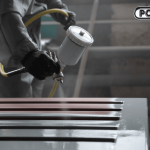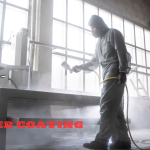Powder coatings produce better coverage of sharp edges and uneven surfaces than conventional finishes but it is still preferable to avoid sharp cut edges for improved protection. Greater thickness of coating is common with powder and this should be allowed for in the design of parts that fit together.
Some of the most common design traps are listed below. Note that product design also needs to take into account the method of jigging of parts during the application process to allow powder to reach all areas to be coated. Some articles may lend themselves to pre-heating and dipping into a fluidised powder bed instead of spray application.
If in any doubt please consult us, preferably at the design stage:
Narrow gaps (e.g. cooling fins) can be difficult to access.
Comers with a significant radius are easier to coat than sharp corners.
Joints formed by the intersection of square tube are easier to coat than joints of circular tube.
Rough welds should be ground smooth to improve coverage.
Thought must be given as to how the article will be suspended/hung for coating.
Avoid recesses or plan for areas that may not receive coating and consider corrosion risks.
Porous materials (eg castings, galvanising) can be coated but may require special processing.
Allow for the extra thickness of powder coating if coated parts fit together.
Moving parts should be disassembled before coating.
Areas not to be coated may need to be plugged or masked.
Avoid sharp edges. Powder covers better than paint but sharp edges are undesirable.





